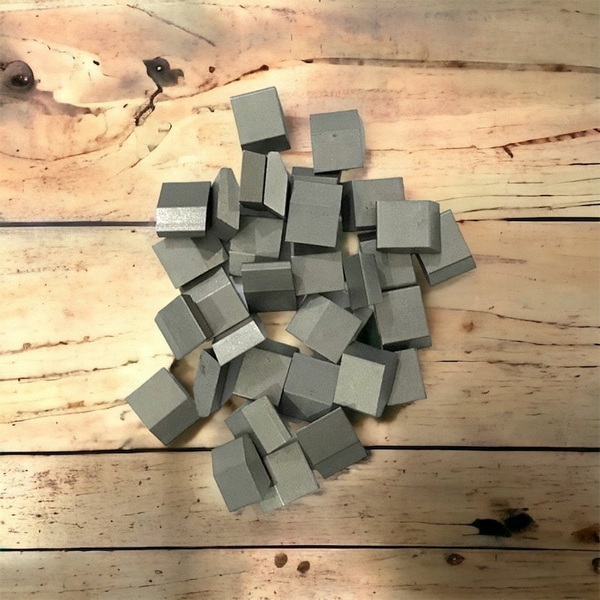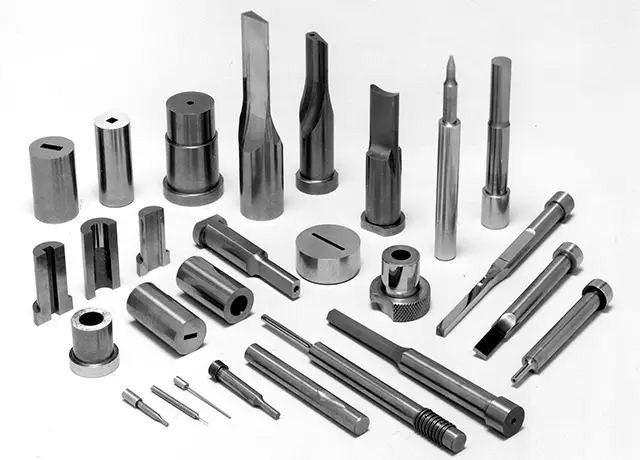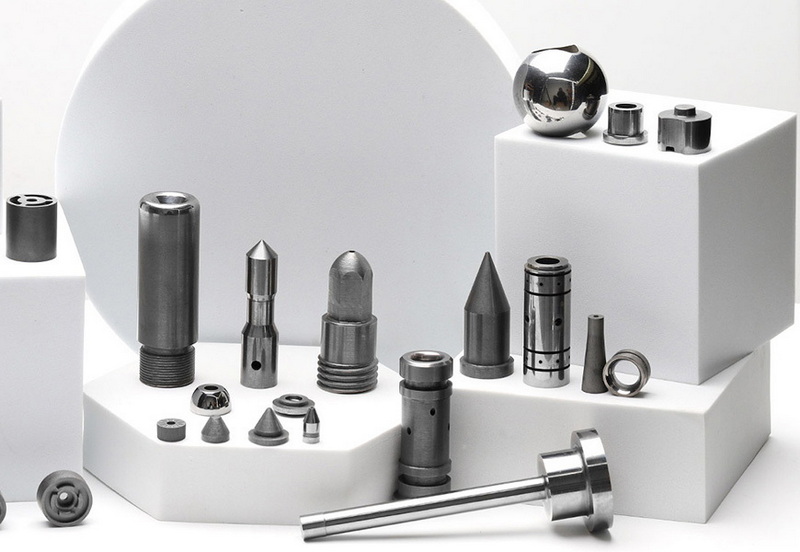Content Menu
● Introduction to Titanium Carbide and Tungsten Carbide
>> Titanium Carbide (TiC)
>> Tungsten Carbide (WC)
● Properties Comparison
>> Hardness and Toughness
>> Density and Melting Point
>> Wear Resistance
>> Cost and Environmental Impact
● Applications
>> Titanium Carbide Applications
>> Tungsten Carbide Applications
● Manufacturing Process
● Environmental Considerations
● Future Developments
● Conclusion
● Frequently Asked Questions
>> 1. What are the primary differences in hardness between titanium carbide and tungsten carbide?
>> 2. Which material is more suitable for high-temperature applications?
>> 3. What are the typical applications of titanium carbide?
>> 4. Why is tungsten carbide preferred in machining tools?
>> 5. How do the costs of titanium carbide and tungsten carbide compare?
● Citations:
Titanium carbide and tungsten carbide are both renowned for their exceptional hardness and durability, making them crucial materials in various industrial applications. However, their properties and uses differ significantly, which can influence the choice between them for specific tasks. This article will delve into the characteristics, applications, and comparisons of titanium carbide and tungsten carbide to help determine which might be better suited for particular needs.

Introduction to Titanium Carbide and Tungsten Carbide
Titanium Carbide (TiC)
Titanium carbide is an extremely hard refractory ceramic material with a Mohs hardness of 9–9.5, similar to tungsten carbide. It is often used in cutting tools, wear-resistant coatings, and as an additive in cermets to enhance hardness and resistance to high-temperature cutting. TiC nanoparticles exhibit good electrical conductivity and chemical inertness, making them versatile for various applications.
Titanium carbide has a face-centered cubic crystal structure, similar to sodium chloride (NaCl). This structure contributes to its high hardness and thermal stability, making it suitable for use in extreme environments. Additionally, titanium carbide is known for its high melting point of approximately 3160°C, which allows it to maintain its properties even under intense heat.
Tungsten Carbide (WC)
Tungsten carbide is known for its high strength, rigidity, and resistance to deformation, making it ideal for cutting tools and abrasives. It has a Mohs hardness of 9.0–9.5 and a melting point of approximately 2870°C. Tungsten carbide is widely used in machining and cutting tools due to its ability to withstand high temperatures and maintain its hardness.
Tungsten carbide is often combined with cobalt to form a composite material known as tungsten carbide-cobalt (WC-Co), which enhances its toughness and allows it to be used in a broader range of applications. This composite is particularly useful in environments where impact resistance is crucial, such as in mining and construction equipment.
Properties Comparison
Hardness and Toughness
- Titanium Carbide: Offers a higher hardness of 28-35 GPa compared to tungsten carbide, but it has relatively lower toughness.
- Tungsten Carbide: Has a hardness of 18-22 GPa but is tougher, making it more suitable for applications requiring impact resistance.
Density and Melting Point
- Titanium Carbide: Has a lower density of about 4.93 g/cm³ and a melting point of 3160°C.
- Tungsten Carbide: Is denser with a density of approximately 15.63 g/cm³ and a melting point of 2870°C.
Wear Resistance
- Titanium Carbide: Exhibits better wear resistance, especially under high-temperature conditions.
- Tungsten Carbide: While highly wear-resistant, it may not perform as well as titanium carbide at high temperatures.
Cost and Environmental Impact
- Titanium Carbide: Generally more expensive to produce and may have a higher environmental impact due to the high temperatures required in its production process.
- Tungsten Carbide: Less expensive to produce but also requires significant energy consumption.

Applications
Titanium Carbide Applications
1. Cutting Tools and Coatings: Used in the manufacture of wear-resistant materials and cutting tools due to its high hardness and wear resistance.
2. Cermets and Composites: Added to cermets to enhance their cutting performance and durability.
3. Aerospace: Used as a heat shield coating for spacecraft reentry.
4. Electronics: TiC nanoparticles are used in electronic components due to their conductivity and stability.
Titanium carbide's high melting point and wear resistance make it an ideal material for applications where maintaining performance under extreme conditions is crucial. Its use in aerospace, for example, highlights its ability to withstand the intense heat generated during spacecraft reentry.
Tungsten Carbide Applications
1. Machining and Cutting Tools: Widely used in drill bits, saw blades, and other cutting tools for its hardness and durability.
2. Surgical Instruments: Used in medical applications due to its corrosion resistance and ability to maintain sharpness.
3. Industrial Machinery: Utilized in components requiring high strength and rigidity, such as spindles and rolls.
4. Jewelry: Tungsten carbide is used in wedding bands due to its hardness and resistance to scratches.
Tungsten carbide's toughness and resistance to deformation make it suitable for applications where impact resistance is important. Its use in mining equipment, for instance, demonstrates its ability to withstand harsh conditions.
Manufacturing Process
The manufacturing process for both materials involves high-temperature synthesis. Titanium carbide is typically produced through the reaction of titanium metal with carbon at high temperatures, while tungsten carbide is produced by reacting tungsten metal with carbon. The addition of cobalt to tungsten carbide enhances its mechanical properties by improving its toughness.
Environmental Considerations
Both titanium carbide and tungsten carbide have environmental implications due to the energy-intensive processes required for their production. However, titanium carbide may have a higher environmental impact due to the higher temperatures needed in its synthesis. Efforts to reduce energy consumption and develop more sustainable production methods are ongoing.
Future Developments
Research into improving the properties of both materials continues, with a focus on enhancing their toughness and reducing production costs. The development of new composite materials combining titanium carbide and tungsten carbide could potentially offer the best of both worlds, providing high hardness and toughness.
Conclusion
Both titanium carbide and tungsten carbide are exceptional materials with unique properties that make them suitable for different applications. Titanium carbide offers higher hardness and better wear resistance at high temperatures, but it is more expensive and less tough. Tungsten carbide, on the other hand, is tougher and less expensive but may not perform as well at high temperatures. The choice between these materials depends on the specific requirements of the application, including cost, environmental impact, and performance needs.

Frequently Asked Questions
1. What are the primary differences in hardness between titanium carbide and tungsten carbide?
Titanium carbide generally has a higher hardness of 28-35 GPa compared to tungsten carbide's 18-22 GPa, but tungsten carbide is tougher.
2. Which material is more suitable for high-temperature applications?
Titanium carbide is more suitable for high-temperature applications due to its better wear resistance under such conditions.
3. What are the typical applications of titanium carbide?
Titanium carbide is commonly used in cutting tools, wear-resistant coatings, and aerospace applications.
4. Why is tungsten carbide preferred in machining tools?
Tungsten carbide is preferred for its toughness and ability to withstand high temperatures without losing hardness, making it ideal for machining tools.
5. How do the costs of titanium carbide and tungsten carbide compare?
Titanium carbide is generally more expensive to produce than tungsten carbide, which can affect the final product's cost.
Citations:
[1] https://shop.nanografi.com/blog/titanium-carbide-nanoparticles-history-properties-synthesis-applications/
[2] https://carbideprocessors.com/pages/carbide-parts/tungsten-carbide-properties.html
[3] https://blog.iqsdirectory.com/tungsten-carbide/
[4] https://www.aemmetal.com/news/tungsten-carbide-vs-titanium.html
[5] https://en.wikipedia.org/wiki/Titanium_carbide
[6] https://www.alamy.com/stock-photo/tungsten-carbide.html
[7] https://www.azonano.com/article.aspx?ArticleID=3379
[8] https://www.tungco.com/insights/blog/5-tungsten-carbide-applications/
[9] https://heegermaterials.com/blog/79_tungsten-carbide-vs-titanium-carbide.html
[10] https://www.acsmaterial.com/titanium-carbide-tic.html
[11] https://en.wikipedia.org/wiki/Tungsten_carbide
[12] https://www.sigmaaldrich.com/US/en/search/titanium-carbide?focus=products&page=1&perpage=30&sort=relevance&term=titanium+carbide&type=product_name
[13] https://www.acapublishing.com/dosyalar/baski/BEN_2020_79.pdf
[14] https://www.acapublishing.com/article/ben/m79-d1fe173d08e959397adf34b1d77e88d7
[15] https://www.sollex.se/en/blog/post/about-cemented-tungsten-carbide-applications-part-1
[16] https://www.carbide-part.com/blog/carbide-vs-tungsten-carbide/
[17] https://www.justmensrings.com/blogs/justmensrings/what-are-the-differences-between-titanium-and-tungsten
[18] https://www.xometry.com/resources/materials/tungsten-vs-titanium/
[19] https://www.istockphoto.com/photos/tungsten-carbide
[20] https://stock.adobe.com/search?k=tungsten+carbide
[21] https://www.shutterstock.com/search/titanium-carbide
[22] https://www.gettyimages.hk/%E5%9C%96%E7%89%87/tungsten-carbide?page=2
[23] https://www.shutterstock.com/search/titanium-carbide?image_type=photo&page=2
[24] https://www.shutterstock.com/search/solid-tungsten-carbide
[25] https://www.carbideprobes.com/wp-content/uploads/2019/07/TungstenCarbideDataSheet.pdf
[26] https://www.aemmetal.com/news/tungsten-vs-titanium.html
[27] https://www.tungstenman.com/tungsten-titanium-carbide.html
[28] https://richconn.com/titanium-vs-tungsten/
[29] https://www.stevengdesigns.com/blogs/news/tungsten-carbide-rings-vs-titanium-rings
















